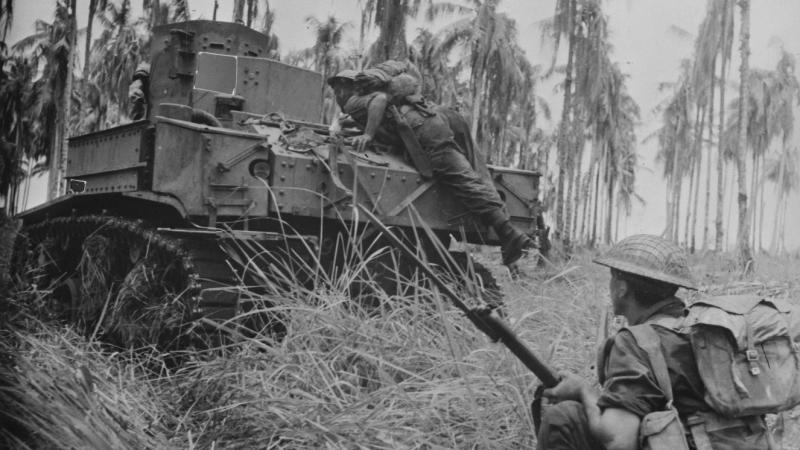M1 ABRAMS: US ARMY TANKS' EVOLUTION SINCE WWII

Tanks are among the most powerful weapons a country may have and can determine its chances of winning on the battlefield. The U.S. Army has since learned that having such a powerful weapon can be a great advantage.
Today, U.S. Army tank units are considered among the best, thanks to their well-built, durable, and powerful design. However, many innovations have been made over time to improve these U.S. Army tank units.
In 2024, the manufacturer of the Abrams tanks was instructed to develop lighter tanks with advanced features. The new M1E3 Abrams tank was finished along with the M30 Mechanized Infantry Combat Vehicle.
Let’s take a look back at some of the most significant tanks used in U.S. history and their evolution.

M1 Abrams in Armored Warfare: U.S. Army Strategy
The U.S. Army tank unit had humble beginnings because the country could not produce its own tanks during World War I. It was not a priority then, but everything changed after the Second World War.
M3 Stuart
This U.S. Army tanker was lightly armed with a 37 mm gun and three .30-caliber Browning machine guns.
On the battlefield, the weapons performed poorly; their bodies were minimal, and their guns were ineffective against armored targets.
However, they performed best in jungles and overpowered inferior Japanese tanks.
M3 Lee
At the time, this tank was unique as it had two armaments: a 37 mm gun in a turret on top and a 75 mm gun mounted in the hull.
The 37 mm gun was created for infantry support, while the 75 mm gun was for hardened structures and enemy attacks. Overall, the M3 Lee's performance was amazing.
M4 Sherman
The M4 Sherman was patterned on the M3 Lee. It could accommodate a crew of five and had armor up to 3.6 inches thick.
At the Battle of El Alamein, it outperformed the British-designed tanks. But it needed to be superior to face its German counterparts. It suffered heavy losses when the Allies entered Western Europe; the U.S. Army lost over 4,000 Shermans.
During this time, these U.S. Army tank units had a lot of losses and were branded as death traps. However, it was still reliable and had a high crew survivability rate. Plus, its gun was upgraded to a 76 mm.
The Patton Tank Family
After World War II, everything changed with the introduction of the U.S. Army's Patton tanks.
The M46 featured a 90 mm gun and could accommodate a crew of five. Its successor, the M47, was mainly exported to NATO (North Atlantic Treaty Organization) countries. The Patton M48 was the military's workhorse during the Vietnam War.
It performed well in infantry support and even went head-to-head against Soviet-designed PT-76 and T-55 tanks. The final member of the U.S. Army’s Patton tank family is the M60. It had a 105 mm gun; then, an upgraded version, the M60A2, was released with a 152 mm gun.
In addition, the M60A2 could also launch anti-tank missiles and was used in the 1983 invasion of Panama and the 1991 First Gulf War.
Abrams U.S. Army Tanks
By the 1970s, the Army designers had started curating a new design. Then, by 1980, the M1 Abrams was introduced.
It was a breath of fresh air at the time, featuring upgraded electronics, an infrared camera, GPS navigation, a foot-thick armor, and its 120 mm gun.
In February 1991, during the Battle of 73 Easting, this U.S. Army tanker destroyed 100 Iraqi tanks in just 23 minutes. Since then, it has been continually upgraded, with its latest version, M1A2 SEP V.3, released in 2017.
Next-Generation M1 Abrams: Lighter and More Powerful
Over the years, the U.S. Army has continued to work on armored tanks. The current U.S. Army tanks add more value to the battlefield.
The M1A2 Abrams Main Battle Tank now stands as the backbone of the U.S. Army's armored forces. Its 120 mm smoothbore cannon packs incredible firepower, while its advanced composite armor and gas turbine engine deliver unmatched speed and protection.
Meanwhile, the M2 Bradley Infantry Fighting Vehicle might not be a traditional tank, but the Bradley supports armored operations with its 25 mm autocannon, TOW missile launcher, and transport capability for infantry.
On the other hand, the Abrams tank has been continuously developed to become more invincible. Recently, the Army announced that a modern U.S. Army tank, the M1E3, is in development.
This tanker is expected to provide higher survivability and better mobility on the battlefield as it will be a very differently configured Abrams compared to its predecessors. Within the next 18 months, the Army aims to work on various technology maturation efforts, including upgrades to in-vehicle operations capabilities, autoloader features, active protection systems, lighter weight, fuel efficiency, and alternative powertrains.
The Army is aiming high with new features for its U.S. Army tank units, seeking a silent drive capability to avoid detection. With the M1E3's new feature in the works, the Army is highly optimistic that it will improve its battlefield operations.
Read next:
- Here's What You Can Expect from the Army's New Stinger Missile
- Can the U.S. Military Win Without Its Army Tank?
- The Track Record of the M1 Abrams Speaks for Itself
Sources:
BY ALLISON KIRSCHBAUM
Veteran, Military History & Culture Writer at VeteranLife
Navy Veteran
Allison Kirschbaum is a Navy Veteran and an experienced historian. She has seven years of experience creating compelling digital content across diverse industries, including Military, Defense, History, SaaS, MarTech, FinTech, financial services, insurance, and manufacturing. She brings this expertis...
Credentials
Expertise
Allison Kirschbaum is a Navy Veteran and an experienced historian. She has seven years of experience creating compelling digital content across diverse industries, including Military, Defense, History, SaaS, MarTech, FinTech, financial services, insurance, and manufacturing. She brings this expertis...



